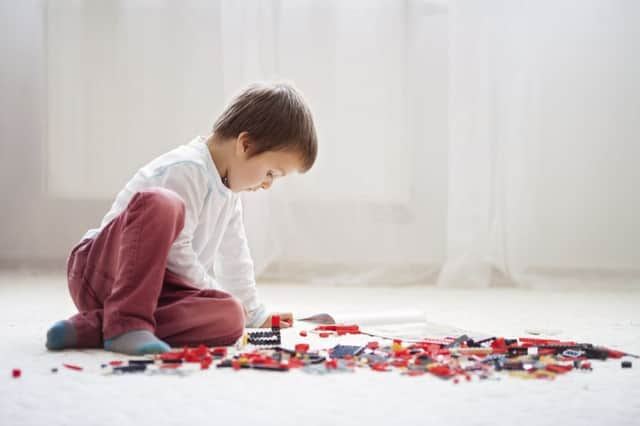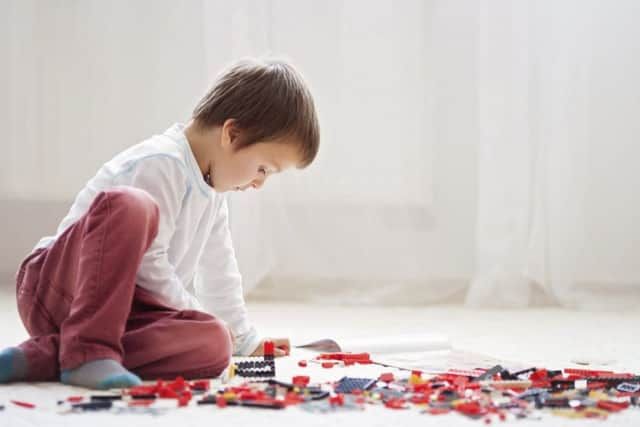Lego therapy can provide the building blocks of social skills


On the Isle of Lewis, pupils are taking advantage of the little known development programme.
And they are being assisted by Point and Sandwick Trust who have just made a donation to Lego groups in their local school, Sgoil an Rubha, to boost their stocks.
Advertisement
Hide AdAdvertisement
Hide AdThe trust gave the school £100 to buy Lego sets when they learned about the benefits the children were getting from Lego therapy.


It works by using everyday Lego and working together to follow the pictorial instructions to build the model.
There are four children in each group and each one is assigned a role – there is an engineer, a director, supplier and builder, and they all have to communicate and work together to achieve their common goal.
Three groups of pupils from Sgoil an Rubha have been aiming to meet once a week since January, for about 30 minutes, for this play therapy session.
The donations the school has received means they have been able to build up a bank of Lego sets so the children can enjoy fresh challenges.


Anne Macphail, Learning Support Teacher at Sgoil an Rubha, is delighted with the support they have had from the community — other businesses also donated — and particularly welcomed the donation from Point and Sandwick Trust.
She said: “We’re really delighted with this very generous donation which is allowing us to get a good bank of Lego within the school which we can then use to really tailor the Lego building programme for each group.”
The idea for starting Lego play therapy in Sgoil an Rubha initially came from speech and language therapy, and Anne found a wealth of information online.
Advertisement
Hide AdAdvertisement
Hide Ad“I was overwhelmed when I started researching Lego therapy,” she said. “It’s big.”
Its benefits are well documented internationally, but there it has still to take off in a big way in the UK.
Work by the Autism Research Centre at the University of Cambridge, led by Dr Gina Gomez – who has since launched the Bricks for Autism initiative – confirmed that Lego therapy leads to improved social skills.
In part, this is thought to be because Lego is so systematic and motivating.
Mrs Macphail said: “Each child gets something different out of the group – for some, it’s to help with verbal articulation, for others it’s more about self-esteem.
“Some of the children really struggle to work within defined roles and this helps them to see how different roles work together.
“It’s about trying to build their social communication skills and the small group aspect is huge. When they come out for this time it’s like they’re twice the size.
“They get the emotional top-up from the time as well as the language and communication benefits.
Advertisement
Hide AdAdvertisement
Hide Ad“This is something that I can definitely see being rolled out more widely in the future as although it works particularly for children with additional support needs, there are positives for a much wider group.”
Angus McCormack, chairman of Point and Sandwick Trust, said: “We were able to speak to one of the children who explained how valuable the Lego is to helping him with his education.
“He could tell us quite clearly what the benefits were to him and his classmates. He knew what it was they were striving for.
“The Lego Groups are proving to be very successful and what we hope is that this will be just the beginning of a very positive relationship with Sgoil an Rubha for Point and Sandwick Trust.”
Dr Gomez, of Bricks for Autism, has been an advocate of the system since discovering it while studying at Cambridge University.
She said: “Children with autism often find social interaction difficult. This is a way of getting them working together in a non-threatening environment.”
Lego-based therapy was the brainchild of Dr Dan Legoff, an American clinical neuropsychologist.
Dr Gomez’s success with Lego therapy has led her to leading sessions at the Science Museum in London, as well as speaking at a number of conferences. She said being part of a collaborative project can have a big impact on autistic children.
Advertisement
Hide AdAdvertisement
Hide Ad“One child has the instructions, and tells the second which blocks to find,” she said. “The third then puts the model together. It allows them to have a joint focus, rather than working alone and they take it in turns to fulfill the different roles.
“Children tend to find it a lot more motivating and less intimidating than a normal social skills group – this way they’re just going to Lego club.”